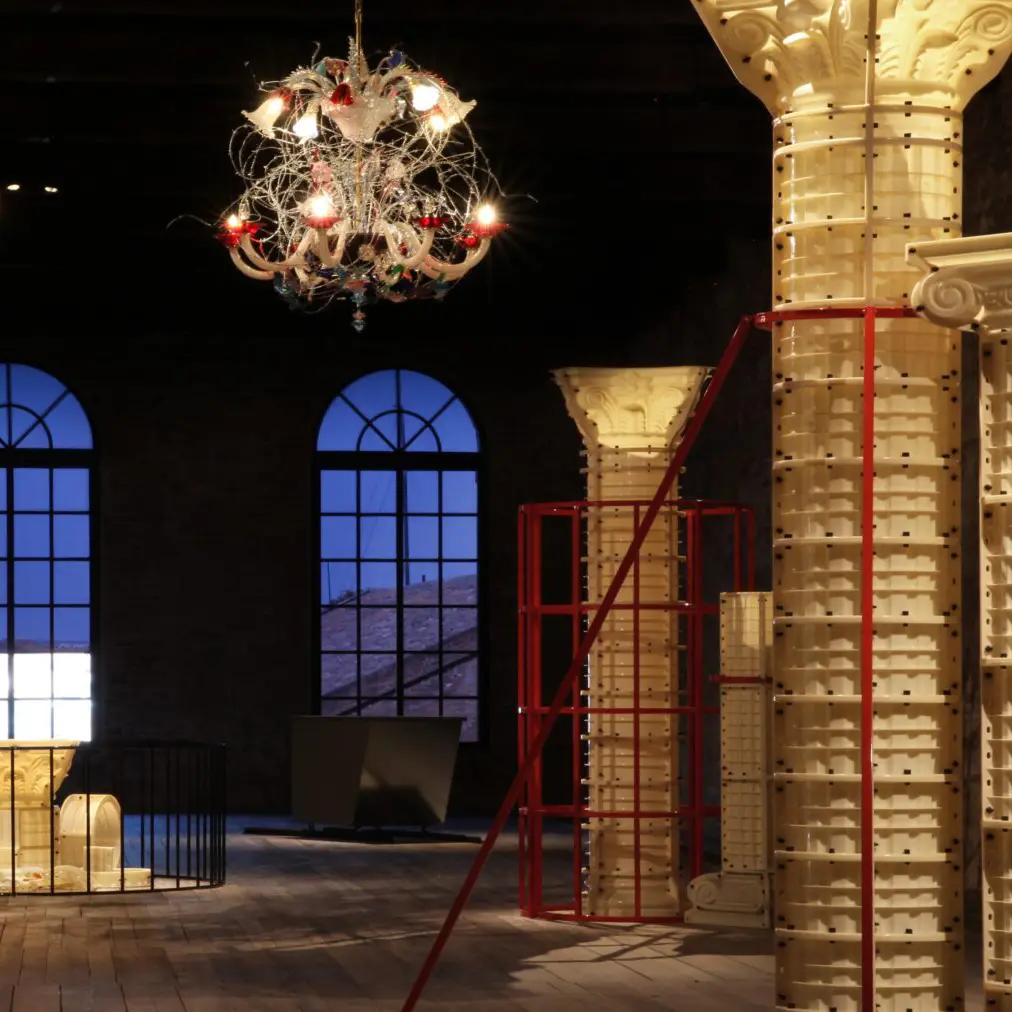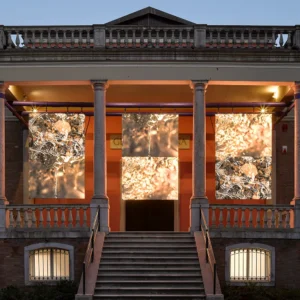Located in the historic Sala d’Armi of the Arsenale, The Turkey Pavilion at the Venice Biennale hosts a powerful installation by Gülsün Karamustafa, one of the leading contemporary artists of the country. It encourages visitors to reflect on the tragic and chaotic state of a world affected by wars, earthquakes, migration, and nuclear threats.
For over 50 years, Gülsün Karamustafa has been addressing societal issues such as migration, memory, belonging, and cultural identities through her art practice. The Pavilion, titled Hollow and Broken: A State of the World, showcases a network of sculptural pieces that highlight the artist’s innovative use of various materials, along with the debut of a new film and a sound installation, all depicting her perspective of the world as fractured and void.
As visitors enter the Pavilion, they are greeted by three chandeliers hanging overhead, made from repurposed Venetian glass, each symbolizing a monotheistic religion: Christianity, Judaism, and Islam. These glowing symbols, entangled in barbed wire, highlight the historical conflicts among the religions, offering a perspective through which she examines the current global situation.
She depicts the world as a realm of perpetual conflict, where shifting landscapes mirror the persistent threats of wars, disasters, and environmental decay. By delving into the resulting anguish, eroded values, and frayed human bonds, she reveals the profound toll of these trials. Her goal is to unveil the emptiness and fragmentation wrought by widespread devastation, intensified by the rapid escalation of these adversities.
In her practice, Karamustafa speaks about things she has experienced, lived, and known. She does not add fiction or fabrications to her work. When she tells the truth alongside her own reality, the work becomes readable. In this way, she can find a perfect audience that will understand, read, and interpret it correctly.
Karamustafa identifies primarily as a storyteller, with a keen interest in various aspects of the human experience, encompassing social structures, contemporary events, migration, memory, belonging, and cultural identities, among other societal concerns. The artist meticulously examines each topic, blending sociological insights with the realities of the social sphere.
According to Karamustafa, what makes a work a work is this feedback loop. This perception and understanding makes itself visible in the works in this pavilion. The exhibition places significant emphasis on space, with Karamustafa finding inspiration in the rectangular Sala d’Armi, echoing the historical Hippodrome of Constantinople in Istanbul from her own experience with the space and its past, enhancing her engagement with the environment.



